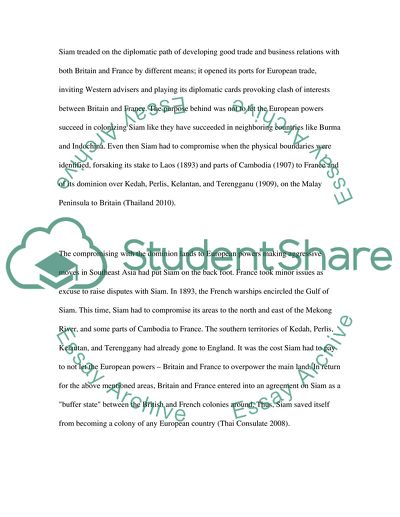Cite this document
(The Kingdom of Siam and Its Buffer State Status between British Burma Term Paper, n.d.)
The Kingdom of Siam and Its Buffer State Status between British Burma Term Paper. Retrieved from https://studentshare.org/history/1733817-the-kingdom-of-siam-thailand-and-its-buffer-state-status-between-british-burma-and-french-indochina
The Kingdom of Siam and Its Buffer State Status between British Burma Term Paper. Retrieved from https://studentshare.org/history/1733817-the-kingdom-of-siam-thailand-and-its-buffer-state-status-between-british-burma-and-french-indochina
(The Kingdom of Siam and Its Buffer State Status Between British Burma Term Paper)
The Kingdom of Siam and Its Buffer State Status Between British Burma Term Paper. https://studentshare.org/history/1733817-the-kingdom-of-siam-thailand-and-its-buffer-state-status-between-british-burma-and-french-indochina.
The Kingdom of Siam and Its Buffer State Status Between British Burma Term Paper. https://studentshare.org/history/1733817-the-kingdom-of-siam-thailand-and-its-buffer-state-status-between-british-burma-and-french-indochina.
“The Kingdom of Siam and Its Buffer State Status Between British Burma Term Paper”, n.d. https://studentshare.org/history/1733817-the-kingdom-of-siam-thailand-and-its-buffer-state-status-between-british-burma-and-french-indochina.


